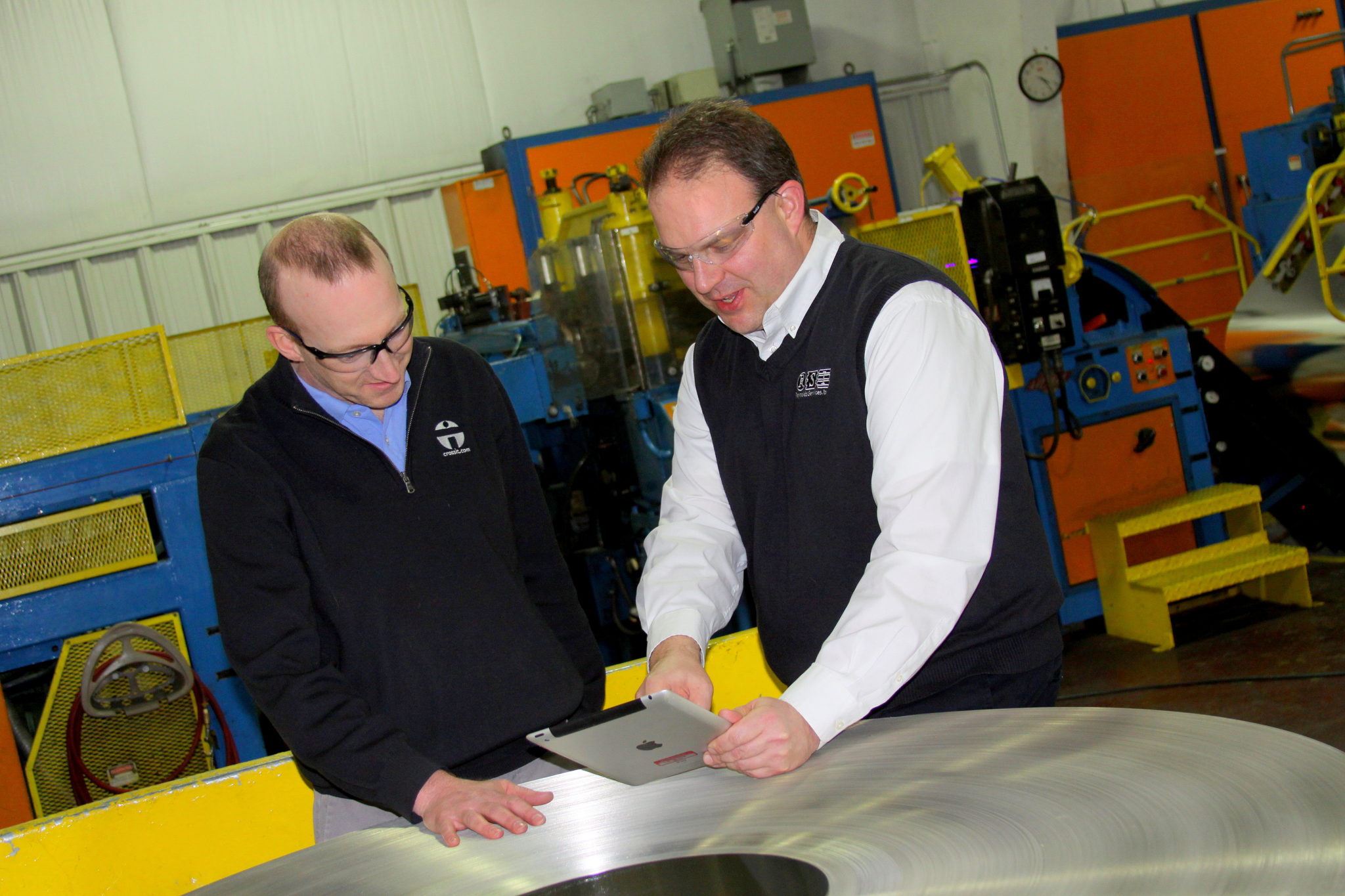Just as armor shields a warrior in battle, tinplate packaging protects your product from the external environment.
Selecting the right material is crucial for the preservation and presentation of products, and tinplate offers multifaceted advantages – it’s the knight in shining armor for your brand.
Preserving Product Quality
Tinplate packaging stands out for its impermeability to air and moisture, critical factors in maintaining the integrity of products. By providing a formidable barrier against environmental contaminants, tinplate ensures that the quality of the contents is preserved, preventing spoilage and extending shelf life.
In addition to its robust barrier properties, tinplate also prevents product degradation due to its resistance to corrosion and chemical interaction. The material’s reliable nature maintains the taste, aroma, and nutritional value of the contents, ensuring that consumers always receive your products as intended. The inertness of tinplate plays a pivotal role in the preservation of quality, often making it the packaging material of choice for long-term storage solutions.
Barrier Against Contaminants
Tinplate excels as an impenetrable fortress—shielding products from deleterious environmental elements and pollutants.
Tinplate’s fabrication involves a lamination process that further enhances its prowess as a contaminant shield.
Landmarks in innovation and materials science enable tinplate to offer excellent barrier properties, with airtight seals that block out light, gases, and moisture, ensuring product purity.
Tinplate sustains its protective role even under harsh conditions, adeptly defending contents against oxidation and chemical contamination—a guardian of product integrity.
Long Shelf Life Assurance
Tinplate packaging is synonymous with unparalleled product preservation, guaranteeing extended shelf life stability. Its robust structure and resistance to corrosion contribute significantly to the longevity of the contents inside, thereby minimizing waste and ensuring consistent product quality over time.
With the inherent strength of tinplate, coupled with its exceptional sealing capabilities, perishables are safeguarded against spoilage. The material’s hermetic sealing qualities prevent the ingress of oxygen and moisture, two primary agents of deterioration. Thanks to these properties, products packaged in tinplate can retain their freshness, flavor, and nutritional value for prolonged periods, standing testament to the superiority of this packaging medium in maintaining shelf life.
Moreover, the non-reactive nature of tinplate ensures that chemical interactions between the packaging and the product are virtually non-existent. This inert characteristic is indispensable for acidic or otherwise reactive foods, as it allows them to maintain their integrity without risk of alteration or spoilage catalyzed by the packaging material itself.
In the discourse of long-term product storage and stability, the merits of tinplate packaging are incontrovertible. It stands as a time-tested solution that offers the reliability necessary for products that require an extended shelf life. Logistics and distribution channels benefit from this durability – managing inventory becomes more flexible as products remain marketable for longer periods, reducing risk of obsolescence. This, combined with the recyclability of tinplate, underscores its unparalleled value in delivering both product preservation and environmental stewardship.
Eco-Friendly Packaging Choice
Tinplate packaging’s recyclability propels its reputation as a sustainable packaging option. It is infinitely recyclable, meaning it can undergo the recycling process numerous times without loss of quality. This feature enables tinplate to support the circular economy, where materials are reused and repurposed rather than discarded, significantly curtailing the generation of waste. Additionally, the energy needed to recycle tinplate is markedly less than that required to produce primary metals, reducing carbon emissions and conserving natural resources.
Utilizing tinplate contributes to environmental protection by diverting material from landfills. Given the robust nature of tinplate, products are shielded effectively during transit, thus reducing waste associated with damaged goods. Its inherent sustainability and lifecycle efficiency make tinplate packaging a responsible choice for brands dedicated to minimizing their environmental footprint while maintaining superior product protection.
Recyclability and Sustainability
Tinplate packaging stands as a paragon of sustainability in the packaging industry.
- Infinite Recyclability: Tinplate can be recycled numerous times without a loss in quality, supporting the principles of the circular economy.
- Energy Efficiency: The recycling process of tinplate consumes significantly less energy than producing new metal, leading to reduced carbon emissions.
- Resource Conservation: Utilizing recycled tinplate reduces the dependence on new materials, conserving natural resources and minimizing environmental impact.The inclusion of tinplate in recycling programs is pivotal for resource conservation.Close adherence to sustainability goals is ensured through the cyclical use of tinplate, reinforcing its environmental stewardship.
Lower Carbon Footprint
Opting for tinplate packaging actively contributes to the reduction of greenhouse gas emissions.
- Sustainable Material: Tinplate originates from steel, one of the most recycled materials globally, which reduces the need for new resource extraction.
- Energy Conservation: Recycling tinplate requires significantly less energy than producing new tinplate from raw materials.
- Efficient Transportation: The high strength-to-weight ratio of tinplate allows for more efficient transport, decreasing fuel consumption and emissions.
- Lifecycle Efficiency: The durability of tinplate ensures long-term performance, minimizing the frequency of replacement and associated environmental costs.
Lifecycle assessment studies show tinplate packaging’s favorable environmental attributes over its life span.
Adopting tinplate for product packaging is a proactive measure toward achieving a lower carbon footprint, a crucial element in the sustainable management of resources.
Cost-Effective Material
Tinplate stands out not only for its strong environmental credentials but also for its cost-efficiency. Renowned for its impressive durability and protective qualities, tinplate brings forth an economical approach to packaging solutions by offering long shelf-life for products. Enhanced by its reusable and recyclable nature, tinplate packaging translates to cost savings throughout the supply chain, from manufacturing to distribution.
Characterized by its material efficiency, tinplate utilizes thinner gauges without compromising structural integrity, thereby requiring less raw material input. This efficiency results in lower production costs while maintaining high-performance standards. Additionally, the relatively low energy costs associated with recycling tinplate further accentuate its position as an economically viable option. In the long run, the investment in tinplate packaging is recouped as the lifecycle costs are lower compared to alternative materials that may require more frequent replacement or fail to offer comparable preservation benefits.
Durability Meets Economy
Tinplate packaging excels in marrying robustness with cost-effectiveness, fundamental in an era where sustainability coincides with financial prudence. It provides the unmistakable integrity needed for the strenuous demands of transit and handling, ensuring product safety is never compromised, while also addressing economic constraints.
Its inherent strength supports multiple uses, resisting corrosion and protecting contents from environmental hazards. This resilience leads to prolonged lifecycle and fewer replacements, culminating in undeniable cost savings.
With the high recyclability of tinplate comes an opportunity to reduce waste and optimize resource utilization, aligning with both ecological and economic objectives. Businesses benefit from the material’s longevity and high recovery rates, as the value of recycled metal supports a circular economy, fostering responsible production practices.
Opting for tinplate packaging not only enhances the product’s marketability but also signifies a commitment to sustainability. As such, tinplate stands as a prudent choice for businesses aiming to minimize environmental impact while leveraging cost efficiency through a packaging solution that delivers on durability. This ensures products reach consumers in impeccable condition—an essential attribute epitomizing the “quality” in product presentation and conservation.
Lightweight for Transport Savings
Tinplate’s low mass facilitates economic transit.
Transportation costs are a significant expense in the supply chain. The reduced weight of tinplate packaging translates into lower fuel consumption during transportation, leading to decreased greenhouse gas emissions. Moreover, the ability to stack dense loads with tinplate can optimize space utilization, permitting more product to be moved per trip.
Optimal load capacity is achievable with tinplate.
Robust yet remarkably lightweight, tinplate permits transport efficiency. This attribute allows for an increased volume of product per shipment without compromising protection, thereby reducing the number of trips necessary.
Indirect environmental benefits complement direct financial savings.
The cumulative savings from transporting lighter tinplate packages can be substantial, providing a two-fold advantage: lowering operational costs and enhancing a company’s environmental profile. This duality is increasingly important as consumers and stakeholders value sustainability in tandem with economic performance.
Diligent attention to weight in packaging design can yield dividends across the entire distribution chain, from reduced demand on freight processes to minimized warehousing costs. Progressively significant as we approach the 2023 threshold for tighter emissions regulations, the logistics advantages of tinplate packaging could become an even more critical factor in supply chain efficiency.
Versatile Design Potential
The transformative nature of tinplate packaging allows for a myriad of aesthetic and functional customizations. Its inherent malleability supports diverse shapes and sizes, giving brands the latitude to innovate beyond the conventional confines of packaging design. Moreover, tinplate offers exceptional printability, ensuring that high-resolution graphics and intricate designs are reproduced with remarkable fidelity and vibrancy. The capacity to integrate embossing and various decorative effects enables products packaged in tinplate to stand out on the shelf, enhancing consumer appeal and reinforcing brand identity. This versatility is key to staying relevant in the ever-evolving landscape of consumer goods.
Custom Branding Opportunities
Tinplate packaging provides a superb canvas for custom branding, impacting shelf presence and brand recall.
- High-Resolution Printing: Tinplate’s smooth surface accommodates high-resolution images, ensuring crisp and vibrant brand messaging.
- Embossing and Debossing: Add texture and dimension to packaging with embossed logos or patterns, enhancing the tactile experience.
- Custom Shapes and Sizes: Configure the tinplate to virtually any shape or size, catering to unique product requirements and standing out visually.
- Protective Coatings and Finishes: Apply specialized coatings for a matte, glossy, or textured finish, aligning with brand aesthetics.
- Interactive Elements: Integrate QR codes or augmented reality markers that connect consumers to digital content, fostering engagement.Such distinctive customization can significantly elevate brand differentiation.By leveraging these branding opportunities, companies can turn their packaging into a potent marketing tool.
Diverse Form Factor Applications
Tinplate packaging’s adaptability extends to myriad form factors, catering to diverse industry needs with unyielding efficiency and aesthetic finesse.
Its compatibility with numerous closures and dispensing mechanisms simplifies package design without compromising on functionality.
Highly versatile, tinplate can be manipulated into complex shapes and intricate designs, offering solutions that are both functional and visually engages the end-user. The ability to work within a wide spectrum of dimensions allows for practical yet innovative packaging solutions.
Furthermore, the material’s inherent strength permits the creation of stackable units, enhancing space efficiency during transportation and display. This malleability aligns with operational requirements across various segments – from food and beverages to personal care products – cementing tinplate’s status as a multifaceted and adaptable packaging medium in our industry.





